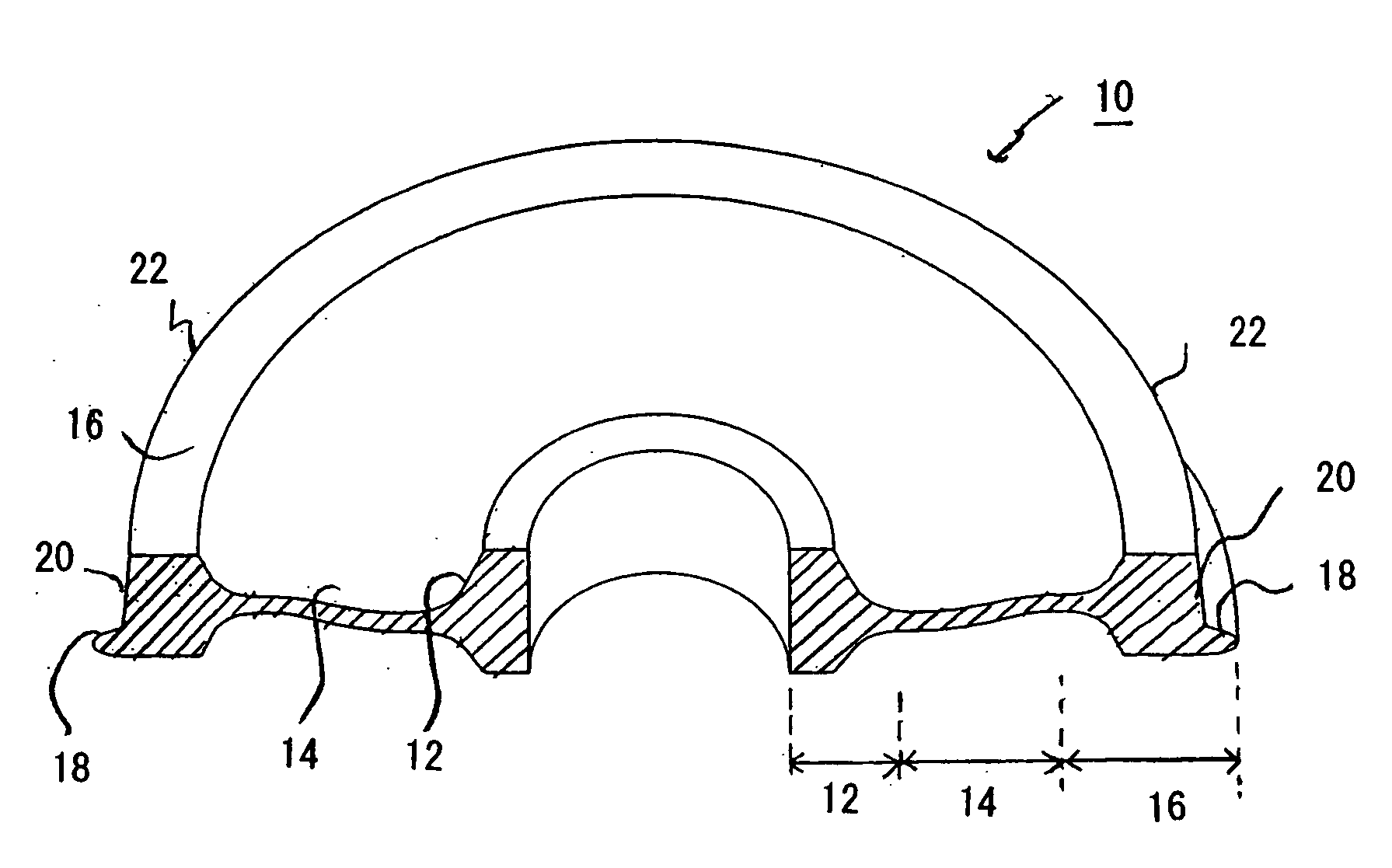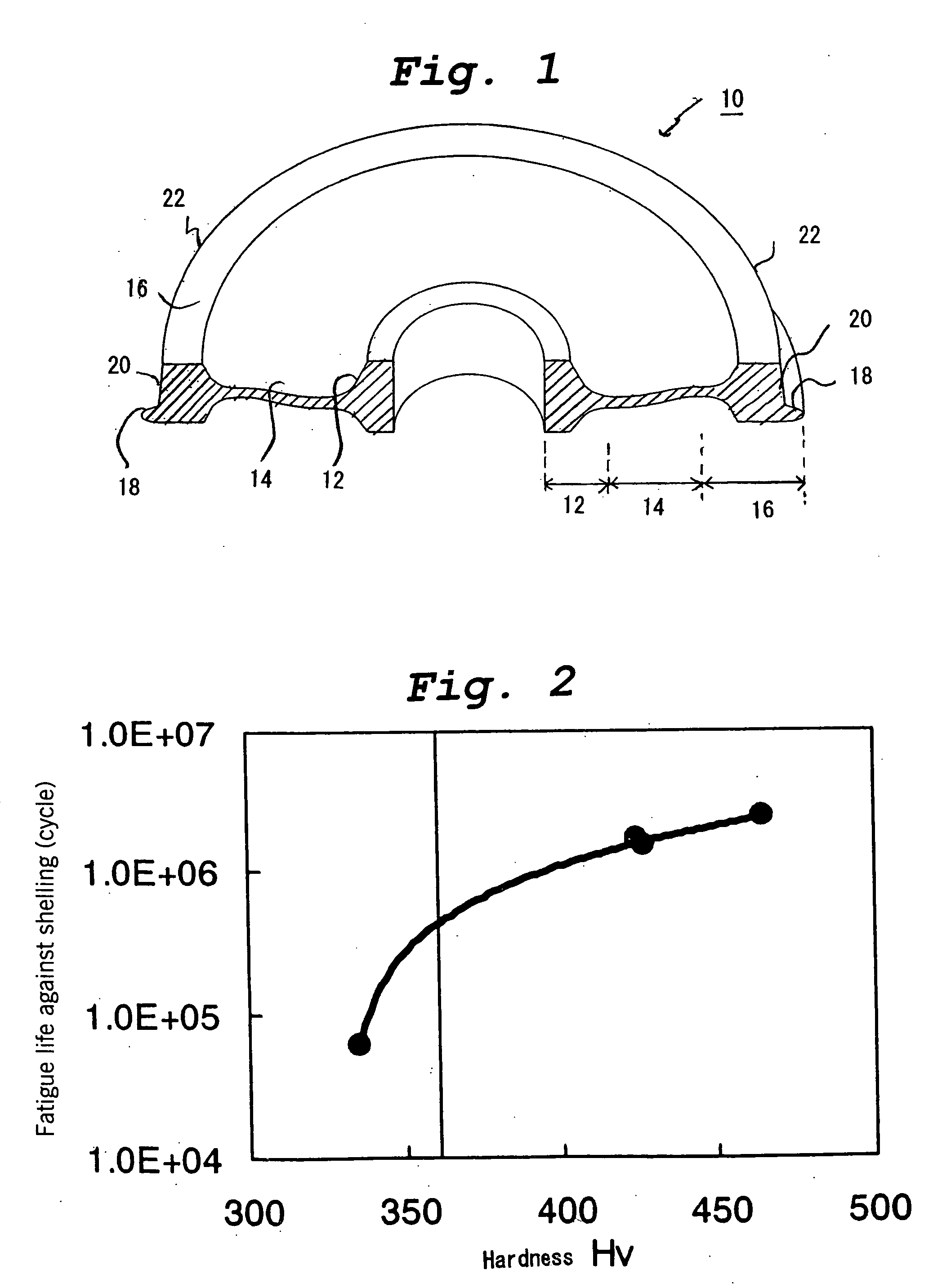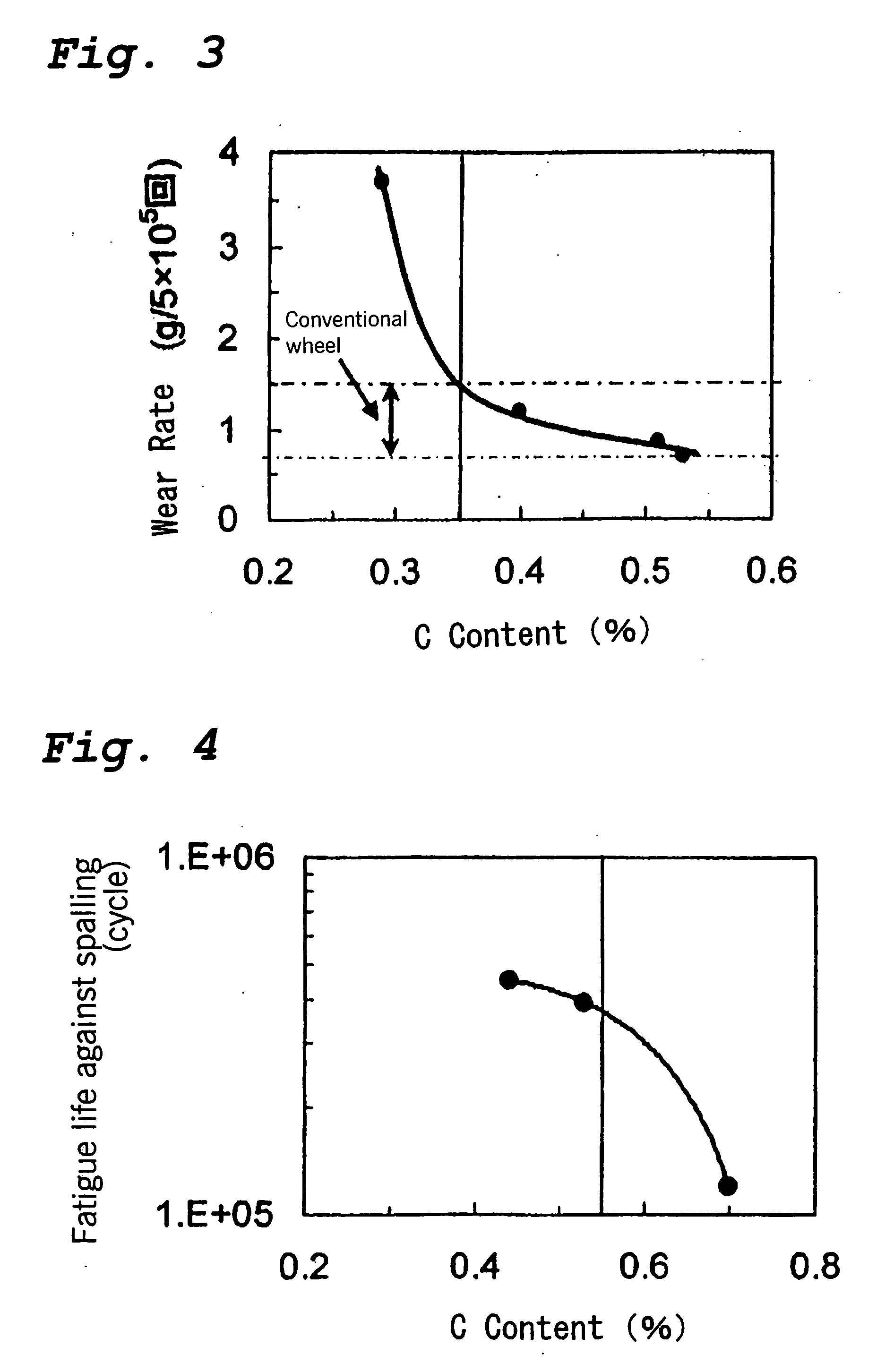Railway car wheel
a technology for rail vehicles and wheels, applied in rail-engaging wheels, transportation and packaging, vehicle components, etc., can solve the problems of inability to obtain hardness, marked decrease in wear resistance, and inability to increase the resistance to spalling, etc., to achieve excellent shelling resistance and spalling resistance.
- Summary
- Abstract
- Description
- Claims
- Application Information
AI Technical Summary
Benefits of technology
Problems solved by technology
Method used
Image
Examples
example 1
[0067] Railway car wheels having the steel compositions and structures shown in Tables 1 and 2 were manufactured by forging and rolling. Heat treatment of the wheels was carried out by continuous cooling (cooling curve I or III). A test piece including the tread surface was cut from each of the resulting wheels. The chemical components, structure, and Vickers hardness of the test pieces used for evaluating resistance to shelling are shown in Tables 1 and 2.
TABLE 1Chemical composition (mass %)CSiMnCrMoPSSol. AlNVNiWheels10.350.220.530.970.400.0020.0020.0380.0060.2300.15of20.400.250.591.010.420.0050.0020.0310.0070.005—Present30.510.250.581.000.410.0010.0020.0260.007——InventionCompar.10.700.240.740.08—0.0120.0080.0490.005——Wheels20.650.840.760.10—0.0100.0060.0420.006——30.290.250.581.000.400.0010.0020.0250.005——
[0068]
TABLE 2StructureHardness HvWheels of1bainite + tempered martensite425Present2bainite427Invention3bainite465Comparative1pearlite334Wheels2pearlite3403bainite336
[0069] Resi...
example 2
[0071] Test pieces were prepared in the same manner as in Example 1. However, heat treatment of the wheels from which the test pieces were obtained was carried out by continuous cooling (cooling curves I and II).
[0072] Tables 4 and 5 show the steel composition, structure, and Vickers hardness of the base metal of the test pieces used to evaluate spalling resistance.
TABLE 4Chemical composition (mass %)CSiMnCrMoPSSol. AlNVNiCuWheels40.440.240.570.960.390.0060.0030.0300.008——of50.530.250.601.210.510.0020.0020.0260.0060.007——PresentInventionCompar.10.700.240.740.08—0.0120.0080.0490.005———Wheels60.701.940.670.95—0.0010.0040.010.002—0.020.02
[0073]
TABLE 5StructureHardness HvWheels of4bainite423Present5tempered martensite415InventionComparative1pearlite334Wheels6bainite421
[0074] Resistance to spalling was evaluated by performing a twin-disc rolling contact fatigue test using a test piece on which a white layer was previously generated by a YAG laser heating. The test was carried out with...
example 3
[0076] Test pieces were obtained in the same manner as in Example 1.
[0077] Tables 7 and 8 show the chemical composition, structure, and Vickers hardness of the test pieces used to evaluate wear resistance.
TABLE 7Chemical composition (mass %)CSiMnCrMoPSSol. AlNVWheels60.380.250.601.010.410.0010.0010.0270.005—of Present70.510.250.581.000.410.0010.0020.0260.007—Invention80.530.250.601.210.510.0020.0020.0260.0060.007Compar.10.700.240.740.08—0.0120.0080.0490.005—Wheels40.610.250.790.12—0.0100.0070.0310.006—50.290.250.581.000.400.0010.0020.0250.005—
[0078]
TABLE 8StructureHardness HvWheels of6bainite442Present7bainite400Invention8bainite400Comparative1pearlite334Wheels4pearlite2905bainite378
[0079] Wear resistance was evaluated by a Nishihara's wear test. A Nishihara's wear test is a test which is carried out by rolling contact with twin disc. This test was carried out with dry condition using a contact pressure of 2200 MPa and a slip rate of 3.0%. Table 9 shows the results for wheels of ...
PUM
| Property | Measurement | Unit |
|---|---|---|
| depth | aaaaa | aaaaa |
| depth | aaaaa | aaaaa |
| contact pressure | aaaaa | aaaaa |
Abstract
Description
Claims
Application Information
 Login to View More
Login to View More - R&D
- Intellectual Property
- Life Sciences
- Materials
- Tech Scout
- Unparalleled Data Quality
- Higher Quality Content
- 60% Fewer Hallucinations
Browse by: Latest US Patents, China's latest patents, Technical Efficacy Thesaurus, Application Domain, Technology Topic, Popular Technical Reports.
© 2025 PatSnap. All rights reserved.Legal|Privacy policy|Modern Slavery Act Transparency Statement|Sitemap|About US| Contact US: help@patsnap.com



